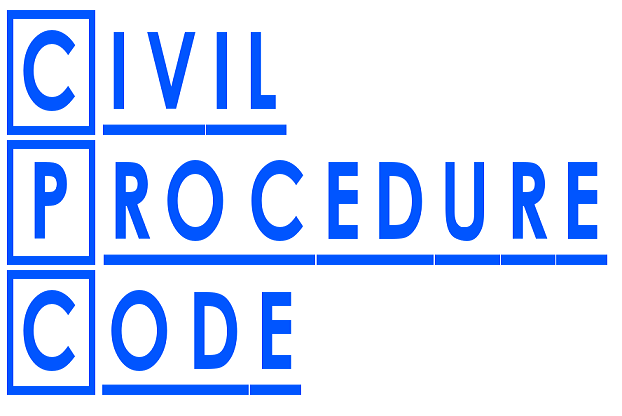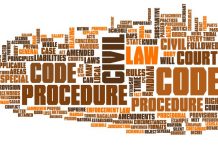This article is written by Priyanshi Soni, from Symbiosis Law School, Noida. This article seeks to highlight the concepts of ‘temporary injunction’ and ‘attachment before judgment’, and the differences between them, as stated under the CPC.
Table of Contents
Introduction
The Civil Procedure Code of 1908 is a law which neither takes nor gives any rights, but helps in regulating the civil courts’ procedures. In recent times, there has been confusion during judgments regarding the difference between the concepts of ‘temporary injunction’ and ‘attachment’ under the CPC. These are temporary remedies given to the plaintiff concerning the dispute of his claims, to prevent the defendant from disposing of the rights of the plaintiff. There is a fine line of difference between the two which has been discussed in this article.
Injunction – meaning and kinds
An injunction is a type of judicial and equitable remedy in which a party is granted relief by the court’s order. In this, the court directs the party to do or refrain from doing a specific act. If the party disobeys this order, they could be subjected to heavy penalties that may also include imprisonment. The main objective of this remedy is to maintain the status quo of the property dispute until the competing claims and rights are resolved before the court. Sections 94, 95, and 36 of the Civil Procedure Code specifically discuss injunctions, however, temporary and perpetual injunctions have been defined under Sections 36 to 42 of the Specific Relief Act, 1963. An injunction can be filed by the defendant or plaintiff, but not by or against any third person.
Temporary Injunctions
A temporary Injunction is granted by the court to temporarily restrain the defendant from committing any injury to the property in question or threatening the plaintiff from disposing of his property. This is an interim relief that is granted with the objective that the plaintiff is not deprived of his rights. This injunction can be granted by the court before the disposal of the suit at any stage of the trial. Temporary Injunctions are governed by the Civil Procedure Code of 1908. Here are the provisions under the CPC which govern this –
- Section 94 – This Section aims at preventing justice from being defeated. Subclause (c) talks about granting temporary injunctions, and in the event of disobedience being shown by the party thereof, even committing the person to civil prison or ordering his property to be attached and sold.
- Section 95 – If the claim of the plaintiff is defeated, then the court can grant compensation to the defendant if he claims so.
Order XXXIX
- Rule 1 of Order XXXIX mentions the grounds on which a temporary injunction may be granted by the court. These are as follows –
- If the property in dispute is in danger of being damaged, wasted or alienated by any party to the suit, or has wrongfully been sold in execution of the decree.
- If the defendant threatens or intends to alienate his property with an intent to defraud the creditors.
- If the defendant threatens to dispossess the plaintiff or otherwise cause injury to the plaintiff in relation to any property in dispute.
- Rule 2 specifies that an interim injunction can be granted to prevent the breach of contract by the defendant or any imminent danger to the plaintiff. In the case of M. Gurudas & Ors v. Rasaranjan & Ors (2006), the conditions required to be fulfilled to grant injunctions were specified as follows:
- The case must prima facie be in favour of the plaintiff.
- The injury caused to the plaintiff must be irreparable, which cannot be compensated in monetary terms.
- Balance of convenience must be in favour of the plaintiff. ‘Balance of convenience’ can be defined as the comparative inconvenience likely to be caused to the plaintiff by not granting the injunction, which will be greater than the inconvenience caused by granting it.
- The dispute raised by the applicant must be bonafide and the possibility of relief should be in favour of him.
- The submissions of the applicant’s affidavits wherein contentions are stated must not be indistinct and should be properly verified. It should fulfil the essential ingredients of an affidavit, with the source disclosed, and should mention the grounds for believing the claim.
The burden of proof is on the plaintiff to get the injunction enforced.
What is “attachment before judgement” under CPC?
An attachment order is a guarantee for satisfying the fruits of a decree that would otherwise become unnecessary. In addition, an attachment order can be appealed and be changed by the High Court. Order 38, Rules 5-13 of Civil Procedure Code, 1908 deals with ‘attachment before judgement’, which is one of the various temporary orders present in the CPC during the pendency of judgements. The primary motive of the attachment of property before judgement is to prevent the defendant from defeating the realization of the decree passed in the plaintiff’s favour. This order for attachment before judgement is given when the plaintiff convinces the court that the defendant is against the decree’s execution or will alienate the property. This legal process of attachment is made to ensure the satisfaction of the judgment.
In the case of Raman Technology & Process Engg. Co v. Solanki Traders (2007), it was rightly observed by the court that the power under this provision is very wide and so it is important to keep a check on unscrupulous plaintiffs so that they do not take unfair advantages.
Conditions for ordering attachment before judgement
Firstly, similar to temporary injunctions, the prima facie case should be in the plaintiff’s favour, i.e., there must be a reasonable possibility that the decree will be passed in the plaintiff’s favour. Along with this, there should be proof by the plaintiff that the defendant is trying to defeat the court’s decree.
There is no settled rule that a court can only grant an order for attachment of property that is in its jurisdiction. The court can even grant such an order if the property is not in its jurisdiction, and later on, the court can send it to the district court in whose jurisdiction the property is situated.
The court cannot grant such an order merely to prevent any sort of dispossession of the property; there should be a bonafide claim by the plaintiff with proper proof for the same.
Some orders were laid down in the case of Premraj Mundra v. Mohd. Maneck Gazi (1951) concerning attachment before judgement, which were-
- If a portion of the property belonging to the defendant is taken by him, such an act cannot be categorised as an attempt to defeat the plaintiff’s claim.
- In any case, mere accusations by plaintiffs will not stand if not substantiated by particulars.
- Defendant’s insolvency shall not be taken as a sole reason for any such order.
- The attachment’s main aim is to prevent the defendant from alienating or transferring the property in the future.
In certain instances, a notice is not required. The defendant, on the other hand, has the opportunity to demonstrate the cause against the attachment of his property. A final attachment order is issued only after the defendant has been allowed to be heard. As a result, this is not an attachment itself because it will be ineffectual until the attachment is carried out under the protocol outlined. This is called conditional attachment.
The Calcutta High Court judgement highlighting the distinction
The Calcutta High Court, in a recent order in the case of Prabha Surana vs Jaideep Halwasiya (2021), clarified the difference between the relief by injunction and attachment before judgement given under CPC. Honourable Justice Moushumi Bhattacharya highlighted this by differentiating based on the nature of the property and the stage of the proceeding.
The case on which this order came was such that the petitioner gave a loan to the respondent of 7.5 crores and the respondent agreed for the same at the interest of 1.5% per annum. But the respondent refused to acknowledge the whole debt amount and so the plaintiff filed a request for temporary injunctions as a relief. The counsel for the respondent made the argument that it is an attachment before judgement and thus, cannot be allowed or be granted relief therewith unless the respondent is given the chase to file the affidavit. The counsel added that no case regarding the disposal of the property was made by the petitioner. Responding to these claims, the court observed that the petitioner has sought relief in the nature of temporary injunction and not attachment before judgement, to prevent the damage or alienation to the property or injury to himself.
Explaining the distinction between the two, the court said that temporary injunctions as per Order XXXIX, Rule 1 are granted temporarily to preserve the disputed property and prevent any harm to the plaintiff. Whereas Order XXXVIII, Rule 5, which explains attachment before judgement, is applicable at a later stage in the suit to execute the decree; it is made when the interim stage is completed. The court further said that in the present case, the plaintiff only sought a temporary injunction as he wanted to protect his monetary claims against the defendants, and did not want an order for any attachment of property of the respondent. Thus, a temporary injunction was granted to the plaintiff after looking into the conditions required to be fulfilled.
The attachment made by the court before the judgement is not an attachment to enforce the decree, but rather a step to prevent the debtor from disposing of the property or bring hurdles in the Court’s process which might delay the process.
Conclusion
There is a fine line of difference between temporary injunction and attachment before judgement. The nature of the property and the stage of the trial constitute the difference. The motive of the remedy of attachment before judgement is to prevent the defendant from defeating the decree being passed in the plaintiff’s favour. Temporary injunctions are ordered to preserve the property till the claims are adjudicated.
It is always considered that these remedies are very wide and give an advantage to plaintiffs. However, the court must check that the plaintiff doesn’t get unscrupulous benefits in any manner.
References
LawSikho has created a telegram group for exchanging legal knowledge, referrals, and various opportunities. You can click on this link and join:
https://t.me/joinchat/J_0YrBa4IBSHdpuTfQO_sA
Follow us on Instagram and subscribe to our YouTube channel for more amazing legal content.
 Serato DJ Crack 2025Serato DJ PRO Crack
Serato DJ Crack 2025Serato DJ PRO Crack










 Allow notifications
Allow notifications


